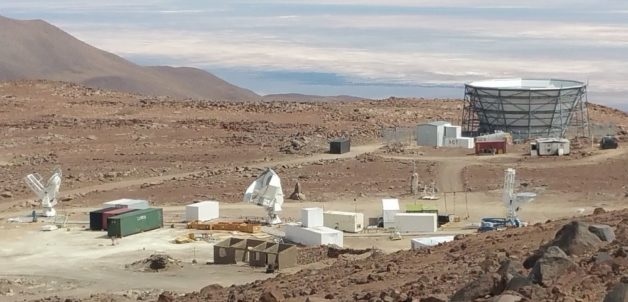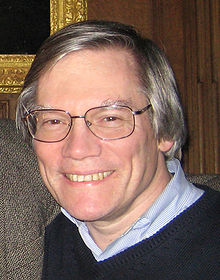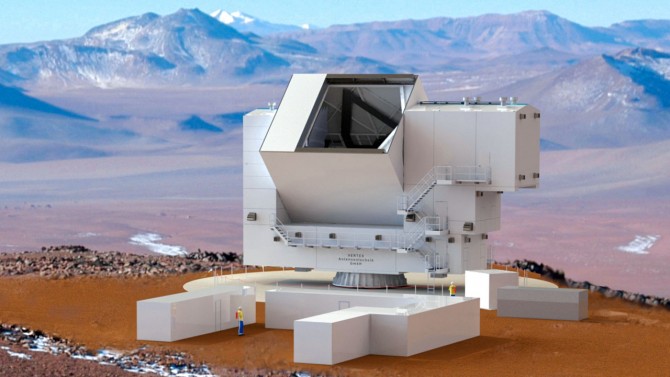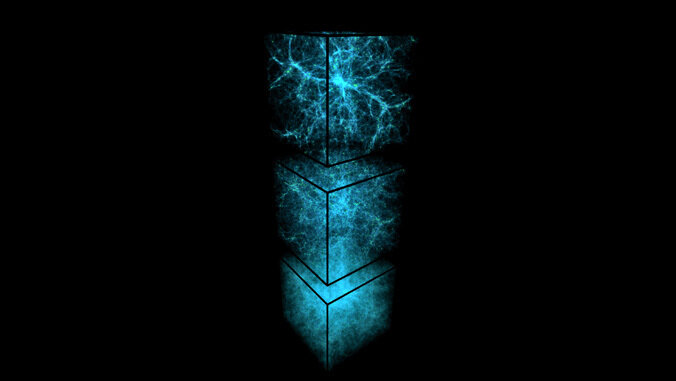12 Feb 2021 {Just now in social media.]
Isabelle Dumé

The new metamaterial tiles in an advanced cryogenic facility. Credit: Eric Sucar/Penn Today.
Tiles made of metamaterials could make ground-based telescopes far more sensitive to the cosmic microwave background radiation [CMBR] that forms the “afterglow” of the Big Bang.


The polyurethane-and-carbon tiles, which work by sharply reducing the reflection and scattering of stray light, are now being installed in the millimetre-wave telescopes at Simons Observatory in Chile and could also be incorporated into upgrades at other facilities.
The cosmic microwave background (CMB) is the remnant of electromagnetic radiation released around 380 000 years after the Big Bang, when nuclei and electrons first combined to form atoms and space became transparent to light. The Simons Observatory is designed to measure directional variations or anisotropies in the polarization of this radiation.

Evidence for certain types of anisotropies would strongly support the theory of cosmic inflation, which states that the universe underwent a period of extremely rapid expansion just 10-35 s after the Big Bang, increasing its volume by a factor of up to 108 within a fraction of a second.
Inflation

Alan Guth, from Highland Park High School and M.I.T., who first proposed cosmic inflation


Alex Mittelmann, Coldcreation
Alan Guth’s notes:

Controlling stray light at cryogenic temperatures
The detectors in modern ground-based millimetre-wave telescopes like ones at the Simons Observatory operate at cryogenic temperatures, which enhances their sensitivity by reducing their intrinsic thermal or electronic noise. Over the past few decades, detector technology has advanced far enough that thermal noise is now less of a limiting factor than noise from stray light. This light, which reflects off the side walls of the cryogenically-cooled detectors instead of following the main optical path in the devices, can degrade the image the detector produces through effects known as “ghosting” and “glinting”, as well as reducing the detector’s overall sensitivity.
To control this stray light, telescope designers need materials that absorb millimetre wavelengths at the ultralow operating temperatures of the telescope’s detectors. Finding such materials has proved challenging because most materials developed for cryogenic temperatures have high indices of refraction, and therefore reflect and scatter significant amounts of light. Meanwhile, lower-refractive-index materials, such as those found in commercial microwave absorbers, cannot easily be employed in cryogenic environments.
Wedge-shaped modular tiles
A team led by Jeff McMahon at the University of Chicago(US) and Mark Devlin at the University of Pennsylvania(US) supported by the Simons Foundation(US) has now developed a way of controlling stray light using a wedge-shaped tile made from a microwave-absorbing metamaterial. Metamaterials are artificially engineered structures that can be designed in ways that give them properties – such as a negative refractive index – that are rare or nonexistant in natural materials.
The new metamaterial is based on carbon particles loaded with 25% polyurethane by mass. While the bulk of this composite efficiently absorbs light in the microwave region, its surface is highly reflective, so the researchers coated it with an antireflective pyramidal-shaped structure.
When combined with the bulk material, which absorbs almost all incoming photons, this antireflective surface makes the metamaterial tiles highly efficient at suppressing signals from stray light, say study lead authors Zhilei Xu and Grace Chesmore. The tiles’ optical properties remain intact at cryogenic temperatures just above absolute zero.
The researchers made their tiles using injecting moulding, a low-cost technique that easily scales up for mass production. The tiles’ modular nature also means that, unlike conventional painted surfaces, any damage can be fixed simply by replacing the affected tiles. While the shape of the tiles is tailored to the geometry of the Simons Observatory, other geometries, such as flat square tiles, are also possible and would exhibit similar optical performance, the researchers say.
Members of the team, who report their work in Applied Optics, now plan to use this technology in other telescopes. “These include the CMB-S4, the Fred Young Submillimeter Telescope (FYST) and the Cosmology Large Angular Scale Surveyor (CLASS),” Xu and Chesmore tell Physics World.

With 21 telescopes at the South Pole and in the Chilean Atacama desert surveying the sky with 550,000 cryogenically-cooled superconducting detectors for 7 years, CMB-S4 will deliver transformative discoveries in fundamental physics, cosmology, astrophysics, and astronomy.
CMB-S4 is supported by the Department of Energy Office of Science and the National Science Foundation.


See the full article here .

five-ways-keep-your-child-safe-school-shootings
Please help promote STEM in your local schools.
PhysicsWorld(UK) is a publication of the Institute of Physics(UK). The Institute of Physics is a leading scientific society. We are a charitable organisation with a worldwide membership of more than 50,000, working together to advance physics education, research and application.
We engage with policymakers and the general public to develop awareness and understanding of the value of physics and, through IOP Publishing, we are world leaders in professional scientific communications.









